

St. Patrick's Parish
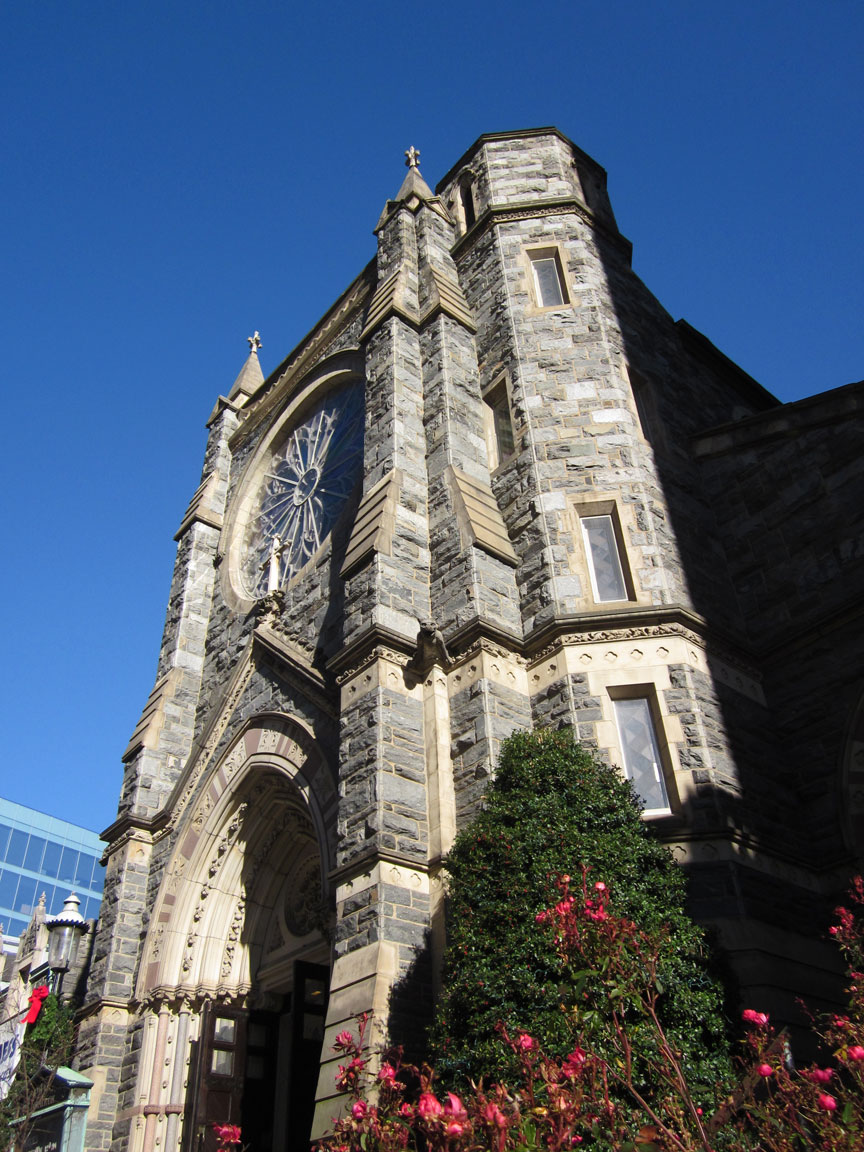
St. Patrick's
St. Patrick's Parish was established in 1794, primarily to meet the needs of Irish immigrants at work on the White House and the Capitol building. Bishop John Carroll appointed an Irish Dominican, Fr. Anthony Caffry, as its first pastor. The initial structure on the present property was a simple frame chapel/residence, one of the first church buildings in the new Federal City. This was six years before the government moved to the Capital in 1800. The pioneer period of St. Patrick's Parish and the City of Washington was marked by struggles on the part of both to be viable.
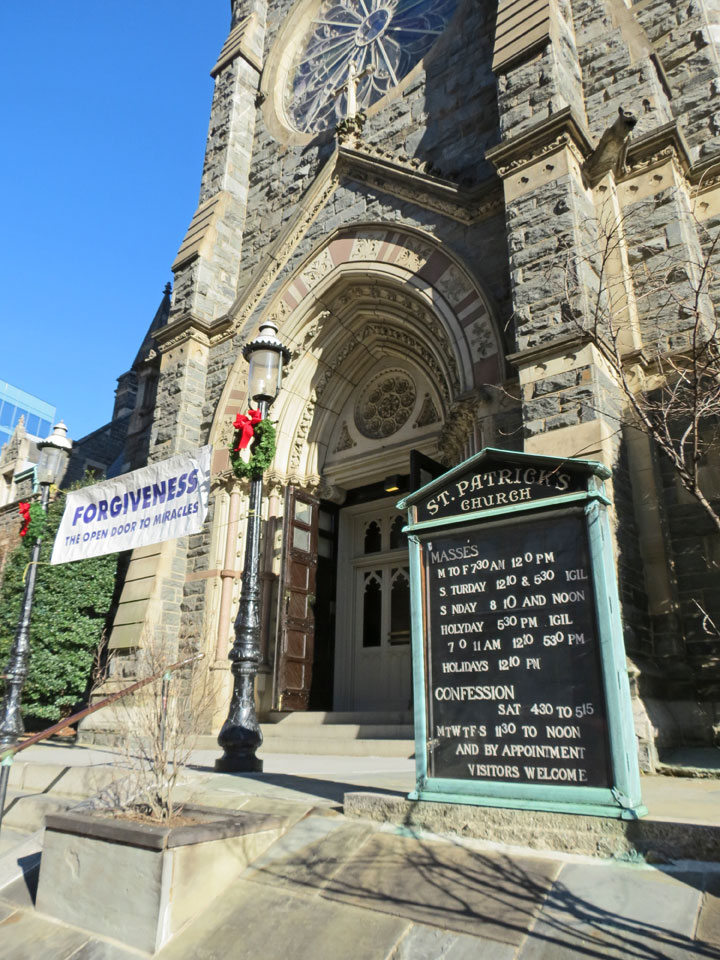
The first American to be ordained a priest in the United States, Fr. William
Matthews, was named pastor in 1804. This multi-talented clergyman occupied the
post for fifty years, during which time he was also President of Georgetown
University, Administrator of the Philadelphia Diocese, co-founder of the D.C.
Public Library, long-time member of the D.C. Public School Board, as well as
founder or promoter of innumerable institutions (e.g. Gonzaga College,
Visitation Convent, and St. Vincent's Orphan Asylum). As the "Catholic Patriarch
of Washington," Father Matthews was on close terms with Washington notables such
as Henry Clay and Chief Justice Roger Brooke Taney; Presidents Zachery Taylor
and John Quincy Adams attended parish events. Fr. Matthews' passing in 1854
marked a long era of Catholic involvement in the Federal City's civic life.
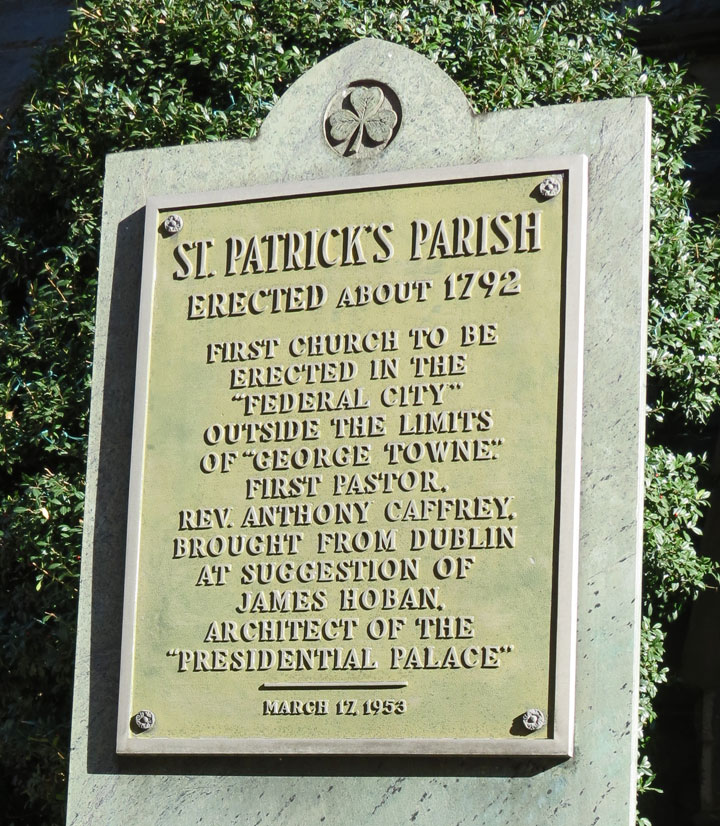
The second church in brick, dedicated in 1809, was reputedly after a design by a
parishioner, James Hoban, the architect of the White House. Soon after, the
church was the scene in 1814 of British soldiers attending Sunday mass when they
invaded the Capital and burned its public buildings. Eventually the brick church
was embellished with the city's first pipe organ, a gift pulpit from Emperor Dom
Pedro I of Brazil and a painting from Charles X of France.
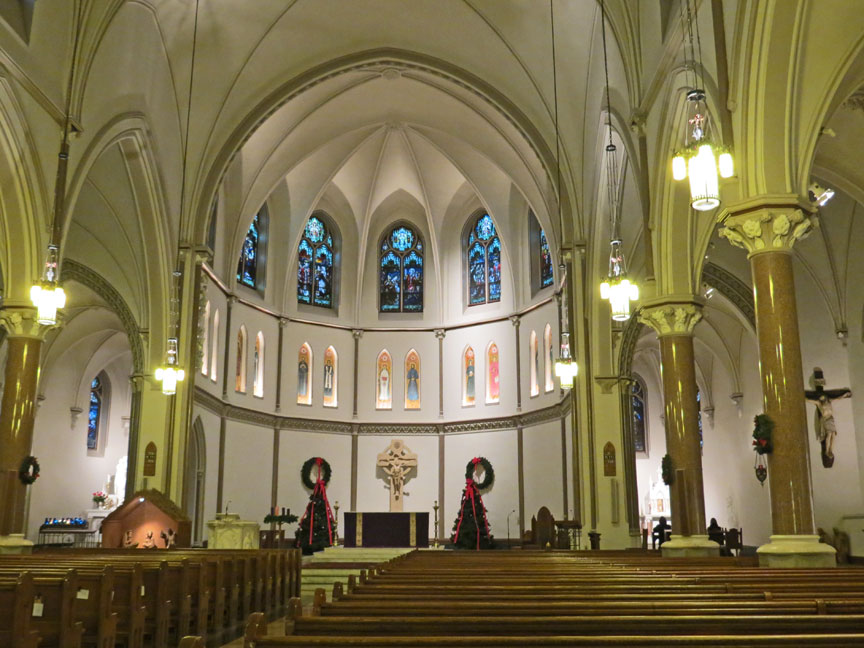
The 1850's brought waves of new Catholic immigrants; the Civil War caused
Washington to swell with burgeoning numbers of troops, some 50,000 wounded
soldiers and new government employees. The parish under Father Jacob Walter, its
fourth pastor, undertook its new challenges with vigor. Father Walter was
especially outspoken in the defense of Mary Surratt, a parish member who was
convicted of complicity in Lincoln's assassination. The pastor stood beside her
on the gallows at her execution. The post-war period with its fiscal depression
gave Fr. Walter reason to enlarge St. Joseph's Orphanage for Boys, to found St.
Rose's Industrial School and St. Joseph's Home for the Aged severed by the
Little Sisters of the Poor.

It was under Father Walter's direction that the present gothic church was begun
in 1872 and finally dedicated in 1884. The grand church quickly became the venue
for national and international events, most notably the First National
Eucharistic Congress in 1895. At the same time the parish was fast becoming the
"downtown" church of a thriving commercial area.

The first two decades of the new century brought St. Patrick's to its zenith of
influence in the American church. The splendor of its liturgy and the dynamism
of its many parish organizations hardly had its equal in this country. This was
largely the efforts of two nationally prominent priests, Denis Stafford and
William Russell.
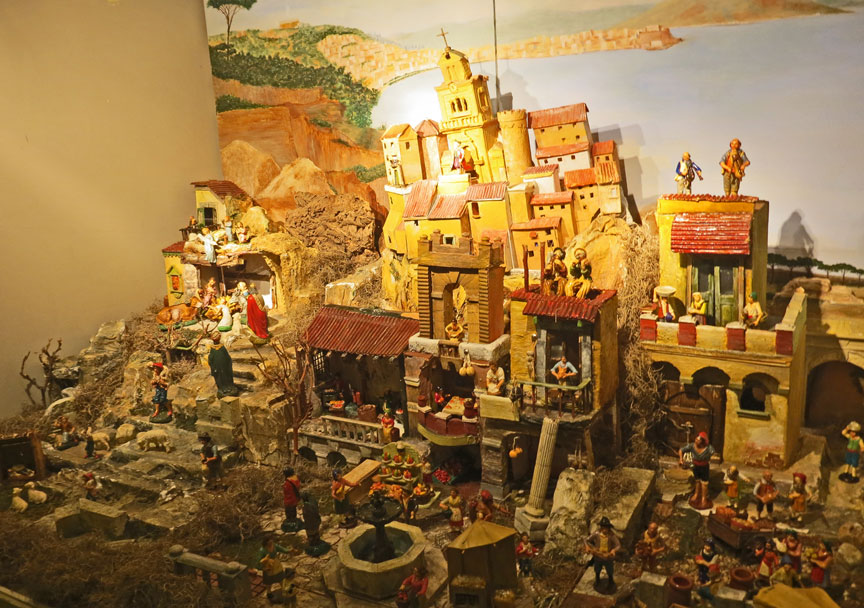
Father Stafford was one of the most noted orators of his day, as well as famous
for his recitation of Shakespeare. In his time the present rectory and school
building were completed in English gothic style (1904) and dedicated by Cardinal
Gibbons and President Theodore Roosevelt. Becoming pastor in 1908, the energetic
Monsignor Russell initiated the annual Pan-American Mass to promote relations
among the American Republics. Presidents Taft and Wilson encouraged this effort
by their attendance. The splendid parish liturgies were matched by equally
zealous parish outreach and evangelization. Monsignor Russell went from St.
Patrick's to become the bishop of Charleston, South Carolina.
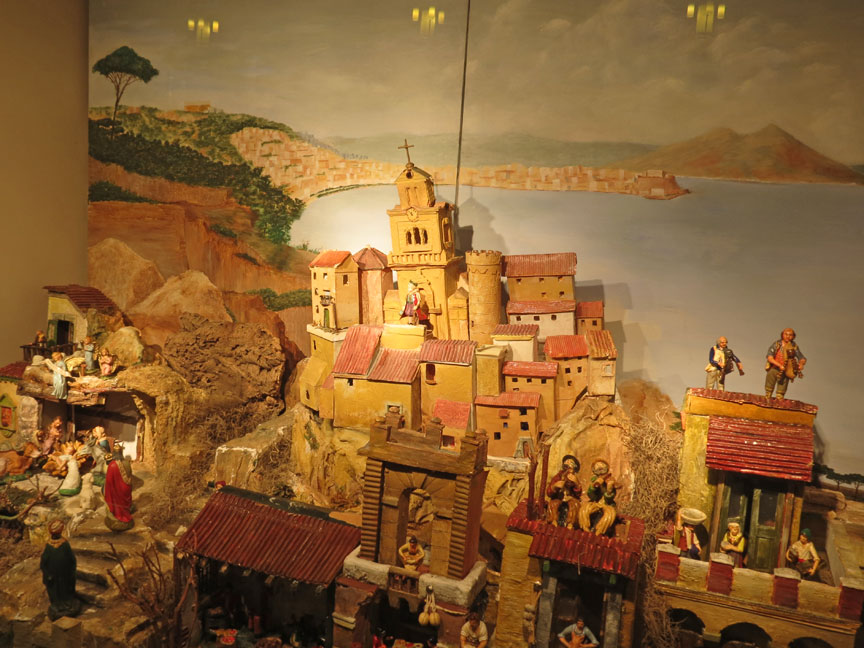
Two weeks after the start of World War I, Monsignor Cornelius Thomas became the
eighth pastor. This rough and ready clergyman galvanized parish organizations to
address the needs of the many troops and workers who flooded in to the war time
capital. The virulent influenza epidemic that killed more than 3,500 in six
weeks, found St. Patrick's clergy fully engaged. Finally, the armistice was
gratefully celebrated with a grand Te Deum on Thanksgiving Day of 1918.

Throughout the postwar decades the mother parish of Washington continued to
serve as a sort of pro-cathedral for the Baltimore Archdiocese. The changing
character of the neighborhood necessitated adjustments in parish activities,
while the Great Depression brought about a strong response to unprecedented
needs locally and citywide. Eventually a professional Catholic Charities
Organization emerged under Monsignor Thomas' prompting. A young assistant priest
of the parish, Father Lawrence Shehan (later Cardinal Archbishop of Baltimore)
guided Catholic Charities during these depression times. Another young
assistant, Father Thomas Dade, initiated the Catholic Police and Firemen's
Society. Some eleven hundred police and firemen in blue marching into St.
Patrick's for their annual mass was a stirring sight. On a very different note,
the newly formed St. Patrick's Players staged dramas and passion plays witnessed
by tens of thousands locally and on the road.
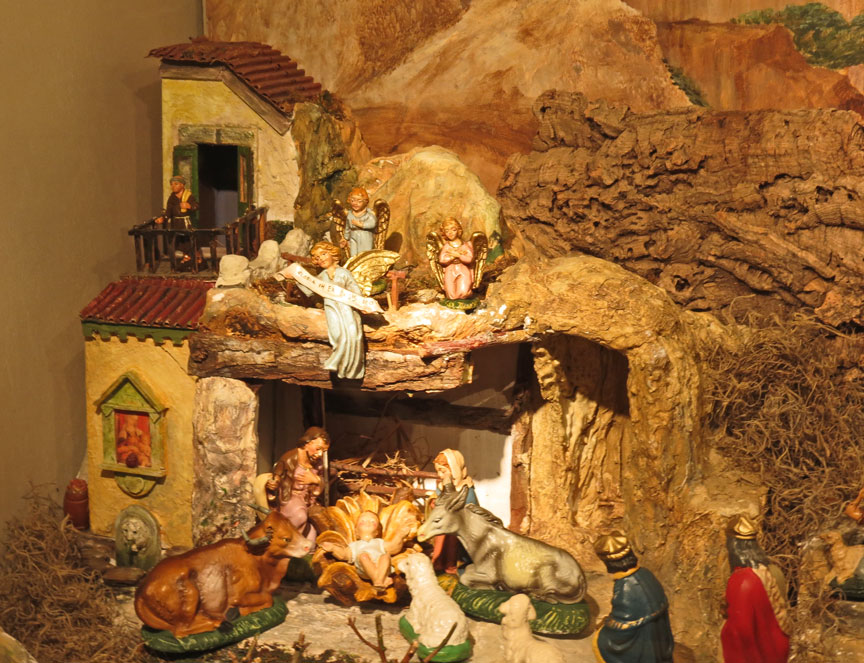
Nativity
The death of Monsignor Thomas, whose active pastorate spanned from one World War
to another, closed an era and opened another. Lawrence Shehan, now a monsignor,
was the logical successor as pastor. Soon after Pearl Harbor a Catholic USO Club
was opened nearby by the able organizer, Fr. Thomas Dade. Throughout the war
thousands of servicemen and women were fed and then entertained by dance bands
in shifts. Under Msgr. Shehan the parish grade school was integrated in 1942,
despite complaints from some quarters. Even during wartime St. Patrick's played
host to the newly-formed Washington branch of the Catholic Interracial Council.
With VJ Day the parish again marked the end of another war by a grand mass of
thanksgiving.
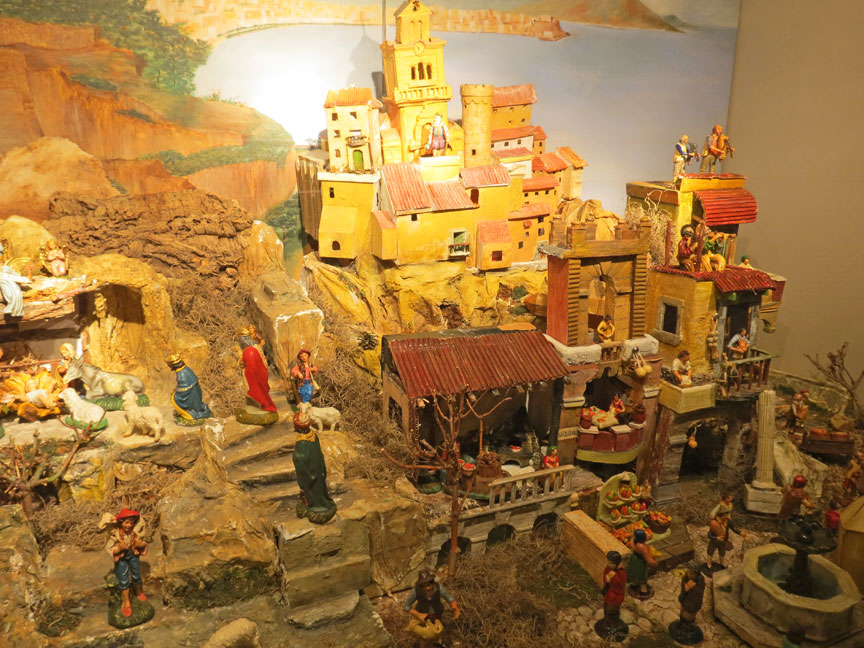
Lawrence Shehan was consecrated a bishop at St. Patrick's in December of 1945
and replaced as pastor by John Russell, a nephew of the former pastor, Bishop
William Russell. Under the impetus of Father Russell, the parish now became
associated with the Catholic Radio Hour and the Catholic Evidence Guild which
prompted street preaching in nearby parks. The popular convert classes were led
by the likes of Fulton J. Sheen.
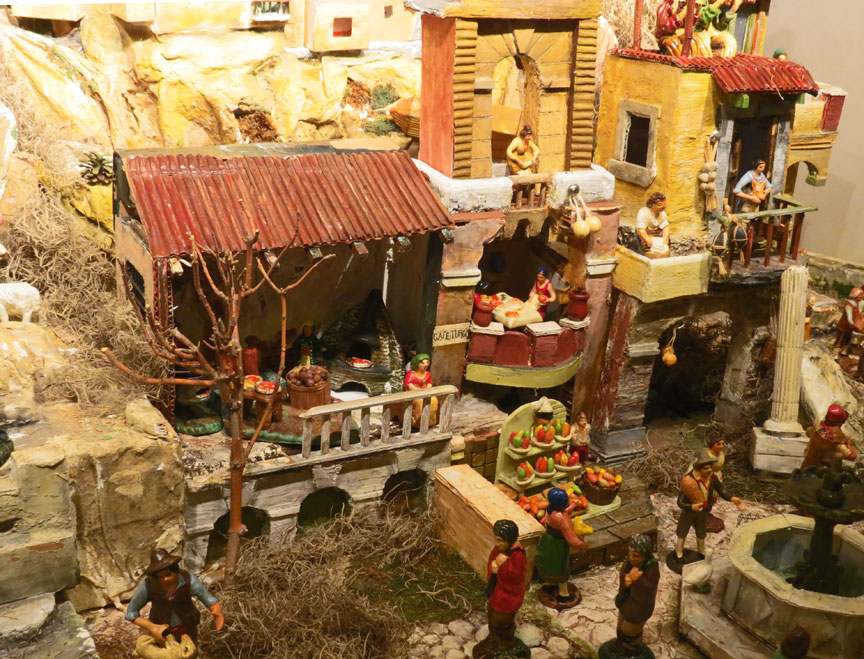
The creation of the new Archdiocese of Washington in 1947 brought its new
Archbishop, Patrick A. O'Boyle, to live at St. Patrick's rectory. While the
Archbishop resided here, the ordinary parish affairs were directed by
administrators, notably Bishop Philip Hannan. Bishop Hannan (later pastor)
encouraged the parish's emerging role as a spiritual haven in the city center
(as a kind of "downtown monastery." Although actual residents of the parish had
dwindled markedly, holy days still necessitated as many as twenty-two masses to
accommodate some fifteen thousand worshipers. In the 50's and 60's House Speaker
John McCormick and Congressman Thomas "Tip" O'Neill along with ordinary
government workers frequented early Sunday masses. The Pan-American Mass marked
its fiftieth anniversary in 1959 and welcomed President Lyndon Johnson in 1967.
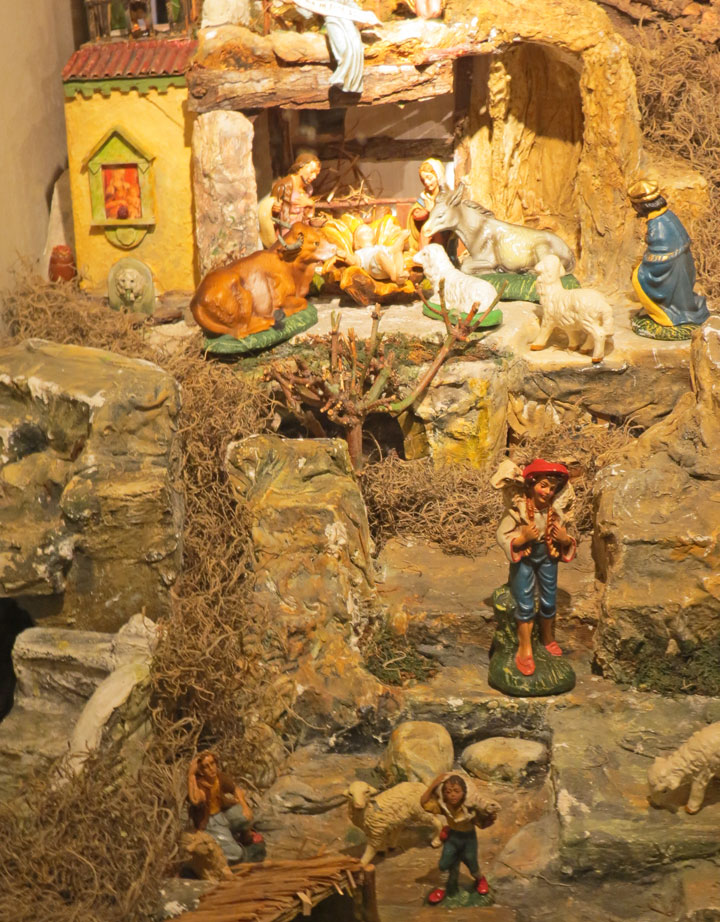
The bullet that struck down Dr. Martin Luther King, Jr., in April of 1968
unleashed a wave of urban violence. The priests and sisters of St. Patrick's
witnessed firsthand the arson and looting nearby, a riot that would dramatically
change the face of central Washington together with the parish. St. Patrick's
Academy opened its doors and fed a battalion of soldiers occupying an adjacent
building. Once again "occupying" troops attended church here.
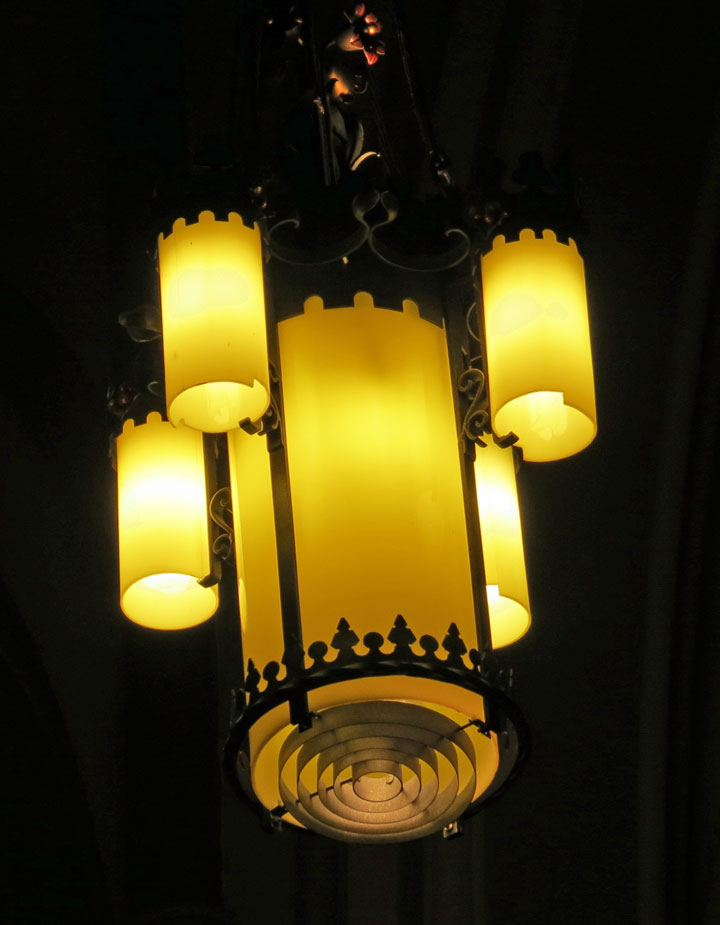
The aftermath of the riots and the advent of Vatican II prompted a number of
changes in parish life. These difficult, yet challenging days were ably charted
under the pastor ship of Monsignor E. Robert Arthur. With a hand in founding many
schools, the parish had been a leader in Catholic education going back to the
1820's. Now, despite valiant efforts, St. Patrick's Academy closed its doors.
The Sisters of the Holy Cross had labored in parish education from 1865 to the
school's closing in 1985.
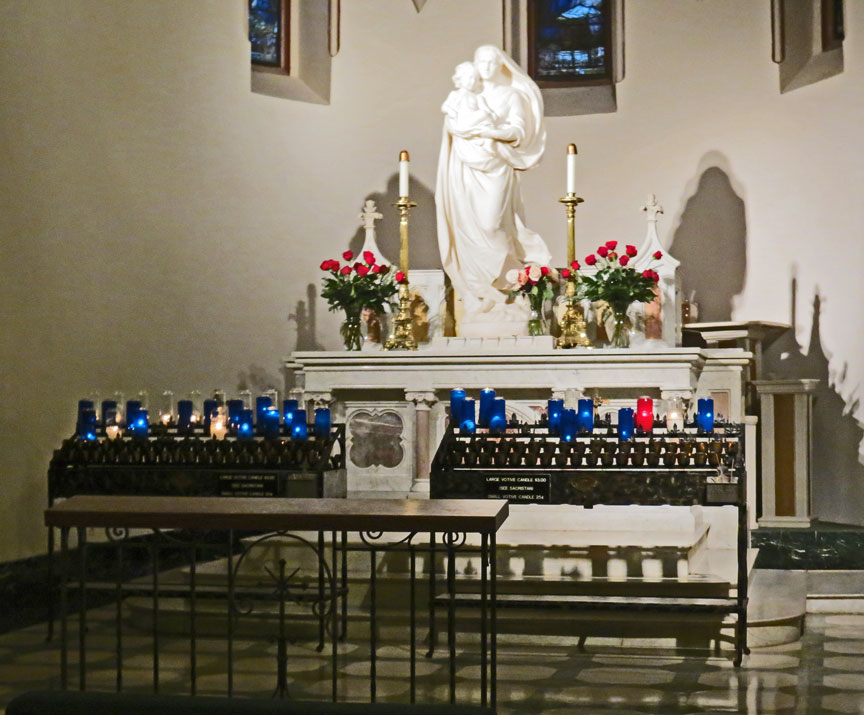
Preparation to the 200th anniversary of the parish on St. Patrick's Day of 1994,
the more-than-century old church structure was extensively repaired and renewed
through the efforts of Monsignor Donald Essex as pastor. This renewal kept well
in mind the vision of its architect and the spirit of the Second Vatican
Council.
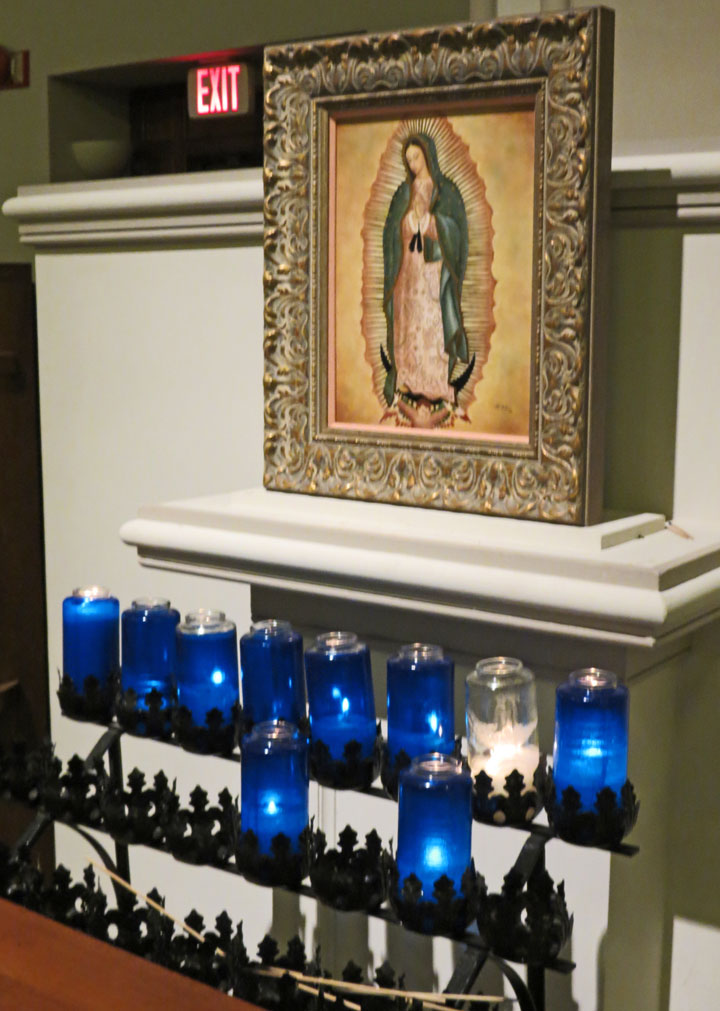
Throughout its history, St. Patrick's mission has often accommodated to changes
in the neighborhood as well as the changing needs of its congregation. The late
1990s saw a revitalization of St. Patrick's neighborhood as second hand stores
and long-neglected commercial buildings were renovated and large new office
buildings constructed. Along with this increase in neighborhood office workers
came new condominium and apartment buildings, bringing new parishioners to St.
Patrick's. Even the former St. Patrick's Academy found a new purpose when the
property was re-dedicated in 2001 as the James Cardinal Hickey Center, the new
downtown home for Catholic Charities.
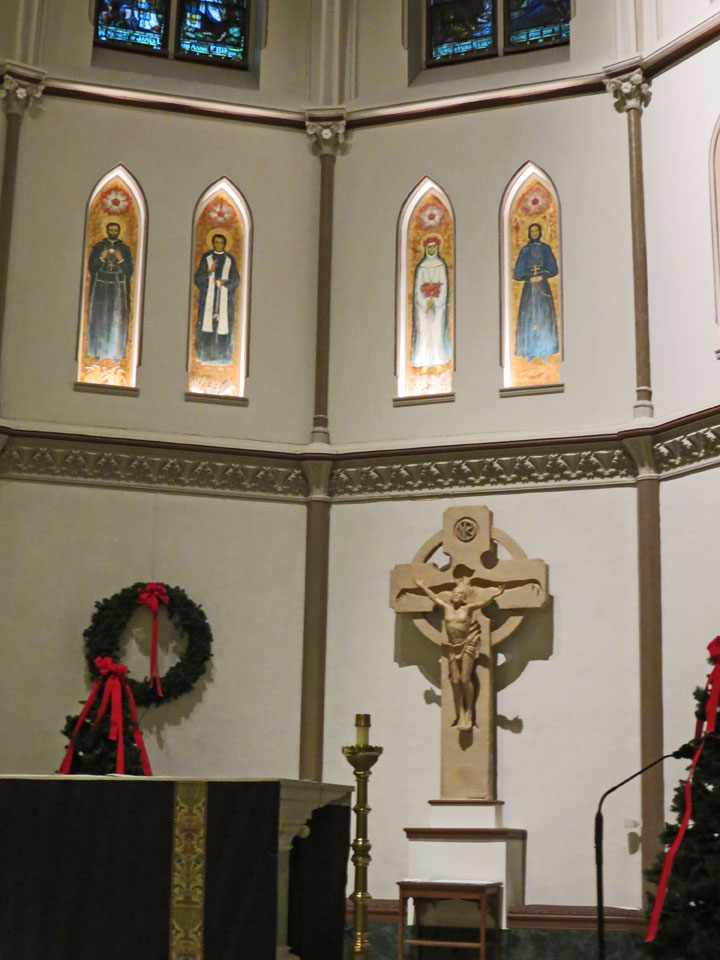
The 16th pastor, Monsignor Peter Vaghi, worked tirelessly during this period of
renewal to attract many new parishioners to the parish through an active
neighborhood evangelization program and through his service as chaplain to the
John Carroll Society, an association of Catholic laypersons united in their
desire for an ever deepening and enriching knowledge of their faith and in
service to the Cardinal of the Archdiocese of Washington, D.C. The society
sponsors a First Friday devotion at St. Patrick's, along with additional Masses
throughout the year. In addition, St. Patrick's is the home each year of
Washington's Blue Mass, which is dedicated to the city's police, firefighters,
and other law enforcement personnel. The current pastor of St. Patrick's,
Monsignor Salvatore A. Criscuolo, serves as chaplain to these brave first
responders in the nation's capital.
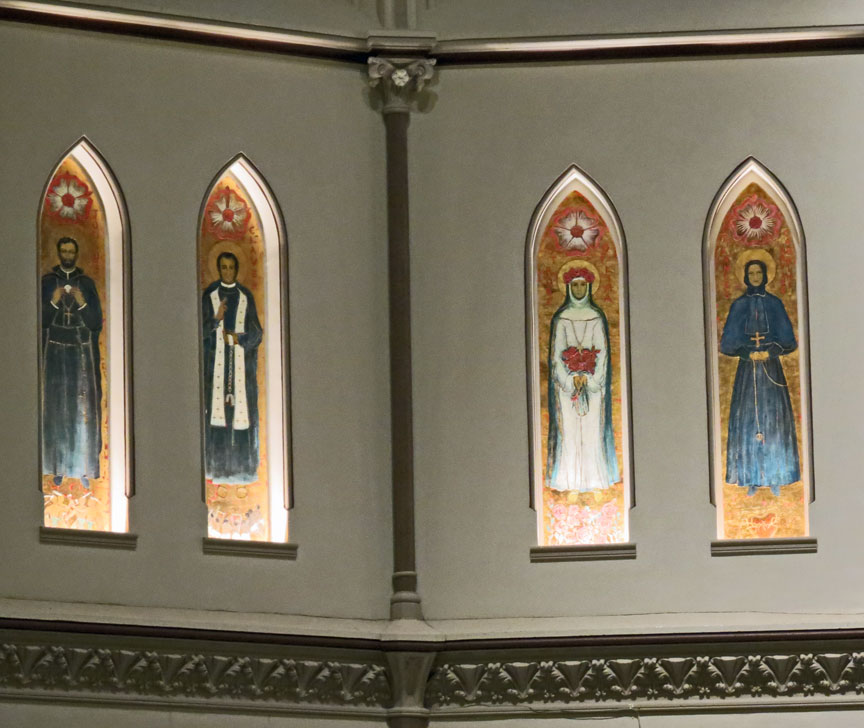
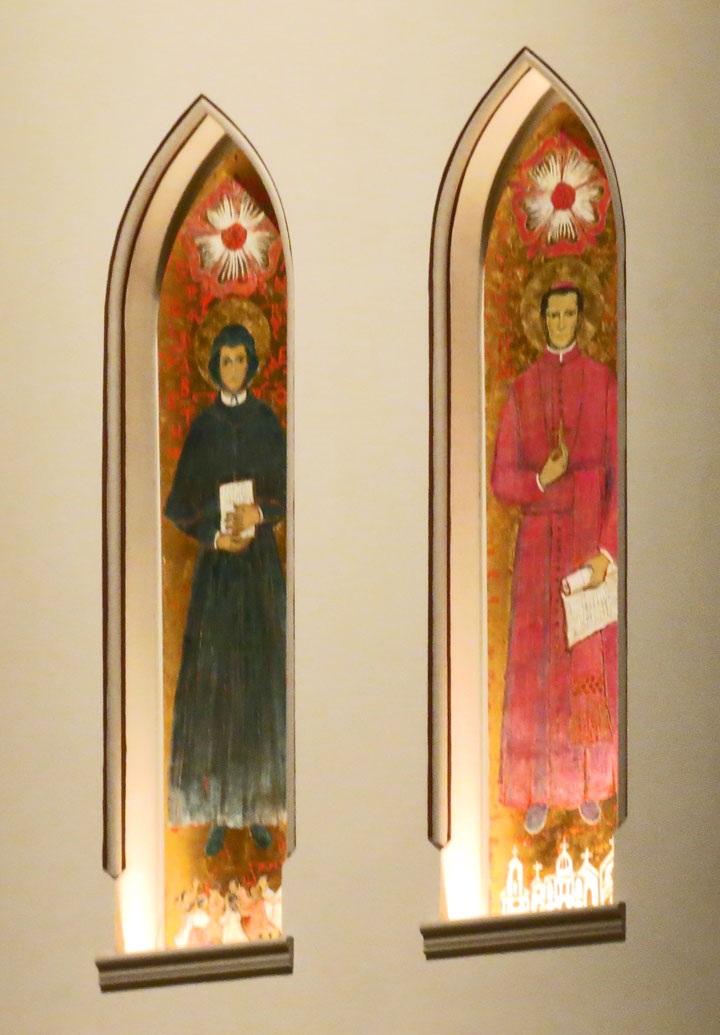
Construction was completed in 2006 of a new office building next door to St.
Patrick's, on land originally purchased by Father Matthews in the early 1800s
and now owned by the Archdiocese of Washington. The property, leased to private
developers with tenants including a large law firm, is named Carroll Square, in
honor of the first bishop of the United States. After construction, a several
month long renovation project was successfully undertaken by Monsignor Criscuolo
to repair cracks and other related damage to St. Patrick's caused by the
building of the Carroll Square office complex.
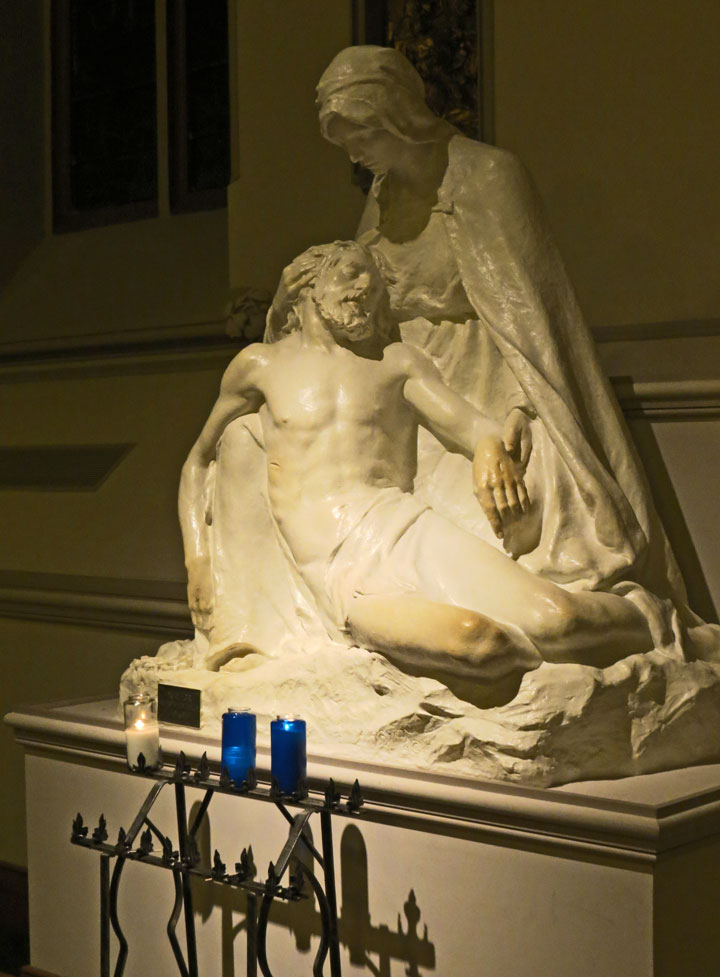
In 2008, St. Patrick's parish began the first new construction effort since
Father Walter completed the main Gothic style church in the late 1800s. A new
parish hall and restrooms are expected to be dedicated by early 2009.
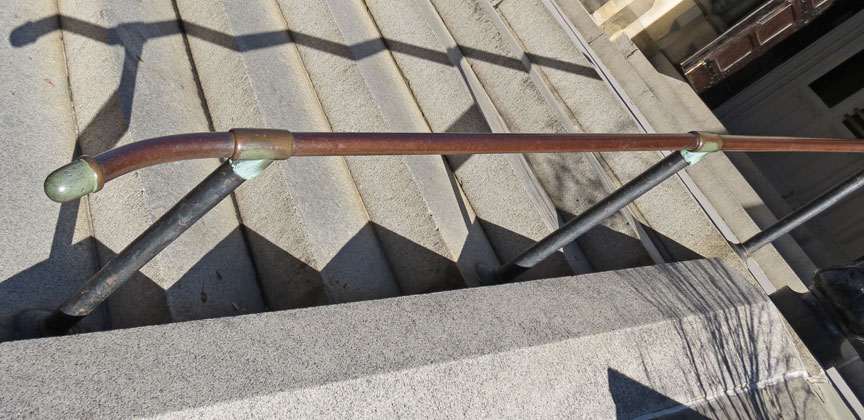
shadows
As a spiritual and cultural oasis in the heart of a booming neighborhood of office workers and residents, St. Patrick's continues its grand tradition of liturgy and music, and launches into its third century of service to the Church and to the Federal City.
Text from Wikipedia